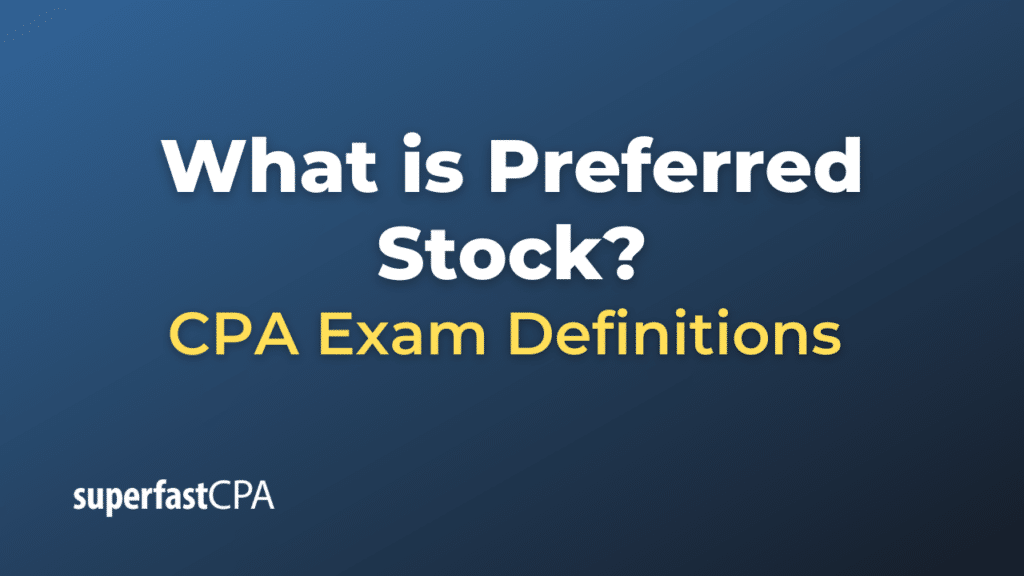Preferred Stock
Preferred stock (also known as preference shares) is a type of equity security that represents ownership in a corporation and has a higher claim on the earnings and assets than common stock. Preferred stock usually carries no voting rights but has a higher claim to dividends or asset distribution than common stock.
The key characteristics of preferred stock are as follows:
- Dividends : Preferred stock typically pays dividends to shareholders before dividends can be paid to common stockholders. The dividends are often fixed, but in some cases, they can be variable, tied to an interest rate benchmark.
- Priority in Liquidation: In the event of a company’s bankruptcy, preferred shareholders are paid off from the company’s assets before common shareholders, but after debt holders.
- Optional Features: Some preferred stocks come with additional features. Convertible preferred stock, for instance, includes an option for the holder to convert the shares into a specified number of common shares. Callable preferred stock allows the issuing company to buy back the shares at a certain price after a set date.
- No Voting Rights: Generally, preferred stockholders do not have voting rights in the company. However, this can vary depending on the company’s articles of association.
- Fixed Dividends : The dividends for preferred stock are generally fixed and not dependent on the profitability of the company, providing a more predictable income stream for investors.
In essence, preferred stock can be viewed as a hybrid security, having characteristics of both debt (fixed dividends, similar to interest payments on a bond) and equity (potential appreciation and a claim on company assets).
Investors may prefer this type of stock because it tends to offer higher yield than common shares and bonds from the same company, and because it poses a lower risk than common stock due to its priority during liquidation. However, the potential for price appreciation is generally lower compared to common stock.
Example of Preferred Stock
Let’s imagine a fictional company, “FoodCo,” that produces organic food products.
FoodCo needs to raise capital for a new production facility. Instead of issuing more common stock or taking on additional debt, the company decides to issue preferred stock. Here are the terms of the FoodCo preferred stock:
- Dividends: The preferred stock pays an annual dividend of $2 per share.
- Priority in Liquidation: In the event FoodCo goes bankrupt and its assets are liquidated, preferred shareholders will be paid before common shareholders.
- Optional Features : The preferred stock is “callable,” which means FoodCo has the right to buy back the shares at any time for $25 per share. It is also “convertible,” meaning that preferred shareholders can choose to convert their preferred shares into common shares at a rate of 2 common shares for each preferred share.
- No Voting Rights: Holders of the preferred stock do not have voting rights at FoodCo’s annual general meeting.
Investors who buy FoodCo’s preferred stock will receive a fixed annual dividend of $2 per share, and if FoodCo ever goes bankrupt, they will be among the first shareholders to be paid from the liquidation of FoodCo’s assets. However, they won’t have a say in the company’s management decisions as they don’t have voting rights.
On the other hand, if FoodCo’s common stock price rises significantly, preferred shareholders have the option to convert their shares into common shares to participate in the price appreciation. Similarly, if FoodCo decides to call the shares, the investors will receive $25 per share.
This fictional scenario provides an example of how preferred stock works and why an investor might choose to invest in preferred shares rather than common shares or bonds. However, the specific terms of each preferred stock issuance can vary, so investors should carefully read the prospectus before investing.













